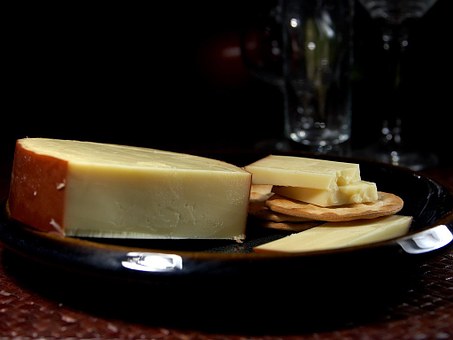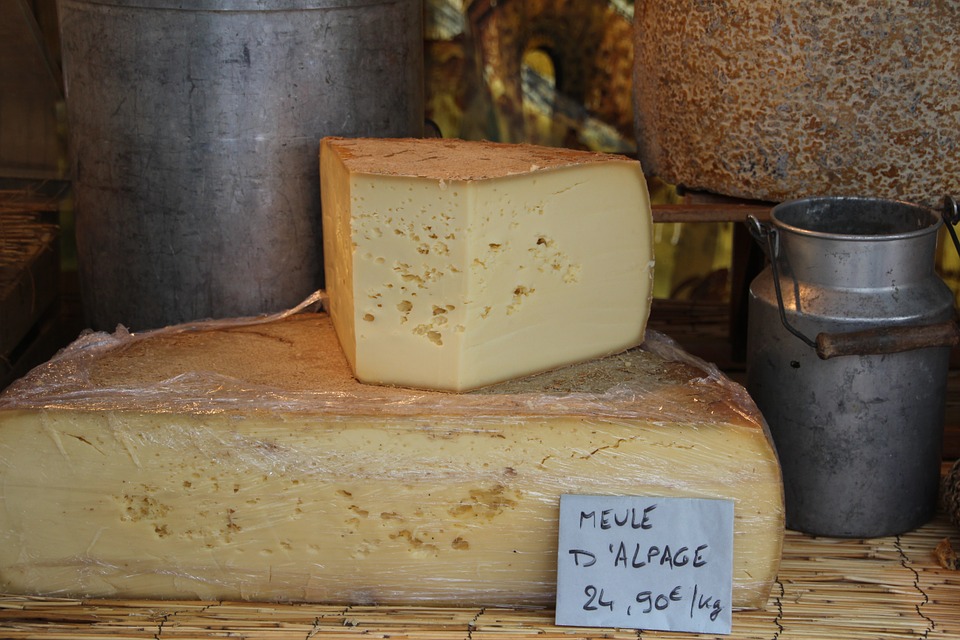What is Gouda?
Gouda, like most cheese, is named after it’s place of origin, Gouda, Netherlands. It has a sort of sweet, slight fruity taste that increases with age. Gouda is also great melting cheese. Often you will see Gouda come in either a black wax or a red wax, and these colors can be used as a guide. The red wax Gouda tends to be the younger Gouda, aged around 6 months or so. While the black wax Gouda is older, usually aged from 12-18 months. A white wax is typically used for Goat Gouda.

Gouda Cheese
Scietific Analysis of Gouda
When Gouda cheese has been aged, it's described as having a heartiness known as the "kokumi sensation". Researchers have identified six protein subunits, or peptides, that appear to be responsible for the kokumi taste of Gouda. These peptides were most often found in aged cheese. When added to a synthetic version of aged Gouda cheese, they conveyed the kokumi sensation (according to taste panelists).
The researchers also found that the full kokumi sensation wasn't present unless the cheese also had the right acidity and saltiness, showing that various taste compounds interact with the cheese. Because a 4-week old cheese doesn't have the same mouthfulness to it as a 44-week old Gouda cheese, the researchers also concluded that the peptides responsible for the sensation develop during the ripening of the cheese. Lastly, the researchers found that the kokumi-peptides do not have any intrinsic (natural) taste. That means a pure solution of these peptides is tasteless.
These peptides are very important to the taste of Gouda cheese, and this knowledge could lead to the ability to technologically enhance the flavor of dairy products.
